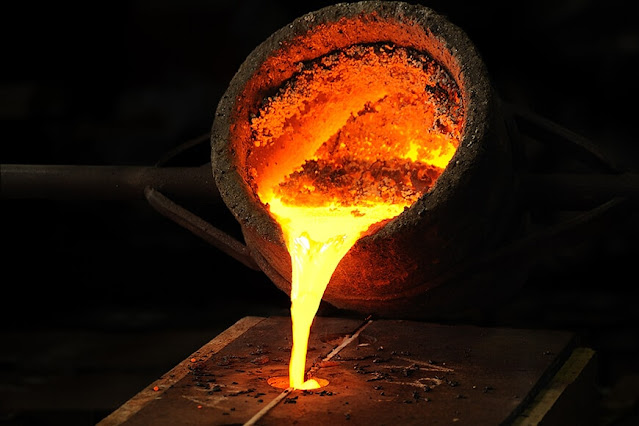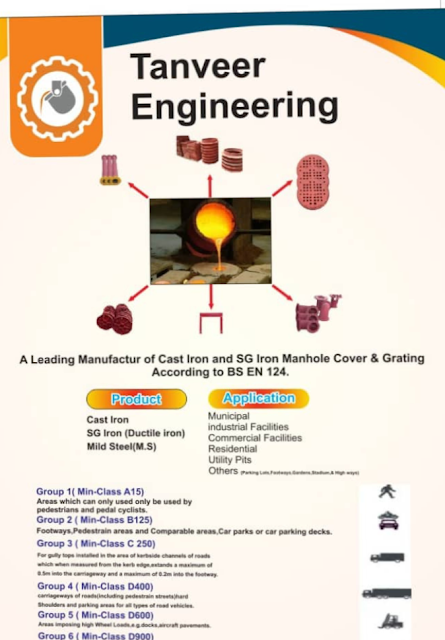What is Green Sand Molding?
Green Sand Molding: An easy Guide Introduction
Tanveer Engineering

Green sand molding is a common method in metal casting. It is popular because it is affordable, reusable, and effective. This technique is essential for making high-quality metal parts used in industries like automotive, aerospace, and heavy machinery.
In this article, we will look at the process and materials involved in green sand molding. We will cover its benefits and uses, the impact of moisture, how it stacks up against other molding methods, and why foundries around the world continue to prefer it.
 |
| Tanveer Engineering |
What is Green Sand Molding?
Green sand molding is a process used in metal casting that involves a blend of sand, clay, water, and organic binders to form molds for pouring molten metal. The term "green" indicates that the mold remains damp and uncured when used.
This method is popular for several reasons:
- It uses inexpensive and recyclable materials.
- Molds can be made quickly.
- It is effective for large production runs.
- It is more environmentally friendly than chemical molding options.
The main components of green sand are:
Component and purpose
Silica sand (75 -85 ,%)
Form the bulk of the mold and provides heat resistance.
Clay ( 10 - 15 % )
Binds the sand particles together for shape retention.
Water (2 - 4 %)
Activates the clay making the sand moldable.
Organic Additives (0- 2%)
Improves strength collapsibility and reduces defects.
Silica sand is the most commonly used sand because it is readily available and can withstand high heat.
Bentonite clay acts as a natural binder, which increases the strength of molds.
Moisture is essential for achieving the right consistency in mold making
 |
| Tanveer Engineering |
The Green Sand Molding Process consists of several essential steps:
1.Pattern CreationA pattern made from wood, plastic, or metal is formed to match the shape of the final cast. This pattern can be divided into two parts for easier removal from the mold..
2.Mold Setup
The green sand mixture is tightly packed around the pattern within a flask. The mold is divided into two sections: the drag, which is the bottom part, and the cope, which is the top part.
3. Pattern Removal
Once the sand is set, the pattern is carefully taken out, leaving a cavity in the sand. Channels called gates and runners are made to allow the molten metal to flow into the mold.
4. Metal Pouring
Molten metal is heated in a furnace and then poured into the cavity of the mold. The metal fills the space, taking the shape of the mold.
5. Cooling and Solidifying
The molten metal cools down and solidifies, forming the desired shape. Proper cooling is crucial to avoid issues
6. Shakeout and Finishing
The process of shakeout and finishing involves breaking open the sand mold to remove the metal casting.
After that, any excess sand is cleaned off, and techniques like grinding, polishing, or machining Green Sand Molding vs. Other Molding Methods
Green Sand Molding is a cost-effective choice for large production runs. Shell Molding offers greater precision but comes at a higher cost. Investment Casting is suitable for intricate parts, although it takes more time to produce them.
 |
| Tanveer Engineering |
Role of Moisture in Green Sand Molding.
Moisture plays an important role in green
sand molding.
- It activates the clay, helping to bind the sand grains together.
- This moisture also adds flexibility to the mold, allowing it to maintain its shape without cracking.
- Additionally, it improves the mold’s ability to allow gases to escape, which helps prevent defects.
However, too much moisture can create steam pockets, while too little can weaken the mold's structure.
Green sand molding offers several benefits.
It is cost-effective because it uses natural, recyclable materials, minimizing waste and lowering production costs.
The process is also fast and scalable, making it ideal for large-scale production with quick mold setup.
Environmentally, it is safer for foundry workers since it avoids harmful chemical binders.
Lastly, it is versatile and can be used for various metals, including iron, steel, aluminum, and bronze.
Green Sand Molding vs. Other Molding Methods.
Green Sand Molding is a cost-effective choice for large production runs.
Shell Molding offers greater precision but comes at a higher cost.
Investment Casting is suitable for intricate parts, although it takes more time to produce them.
Applications of Green Sand Molding
Green sand molding finds applications across various sectors, including:
- Automotive: Engine blocks, cylinder heads, and brake drums
- Aerospace: Structural components for aircraft
- Industrial Machinery: Pump housings, gears, and bearings
- Construction: Manhole covers, pipes, and valves
Common Defects in Green Sand Molding & How to Prevent Them
Conclusion
Green sand molding is an efficient and sustainable casting option. It effectively produces high-quality metal parts at a low cost, making it a preferred method in many industries globally. For businesses looking at metal casting, green sand molding offers scalability, eco-friendliness, and affordability.
What are your thoughts on Green Sand Molding? Have you ever utilized this method?
Share your insights in the comments.



Comments
Post a Comment